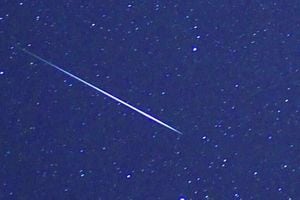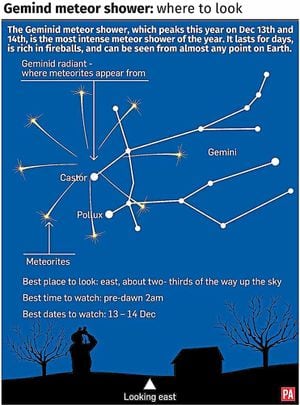Shooting stars set to light up night sky
One of the most stunning meteor showers of the year is due to light up the skies over the Black Country.

The Geminids will offer Mother Nature's answer to the Christmas lights on homes, pubs and shops below as the shooting stars take over the night sky.

Astronomers will be heading to the hills to get some of the best views of the display which fills the sky every year between December 4 and 17.
This year the display is expected to peak on December 13 and 14. Peak time is usually about 2am.
The Geminids, along with the Quadrantids which are seen in January, are the only meteors that do not originate from a comet.
They are in fact a meteor shower caused by a three-mile-wide asteroid called 3200 Phaethon, which is orbiting the sun.
As the asteroid gets very close to the sun, the intense heat makes its rocky surface crack apart. Pieces fly off and trail behind it.
Every December, the Earth crosses the orbital path of the asteroid so this trail of space rubble collides with our atmosphere. The rock and dust then burn up and create streaks of light.
The Geminids were first recorded in 1862 – very recent compared with other shooting stars – and seem to be getting more intense every year.
The meteors get their name because they appear to come from the constellation Gemini. They are quite slow-moving, travelling at about 22 miles per second, so they are usually easy to spot.
Anyone keeping an eye out for the spectacle can expect to see as many as 120 to 160 shooting stars per hour.
But they may be hampered even if there are clear skies because there will be a full moon at around that time which will be larger than normal.




